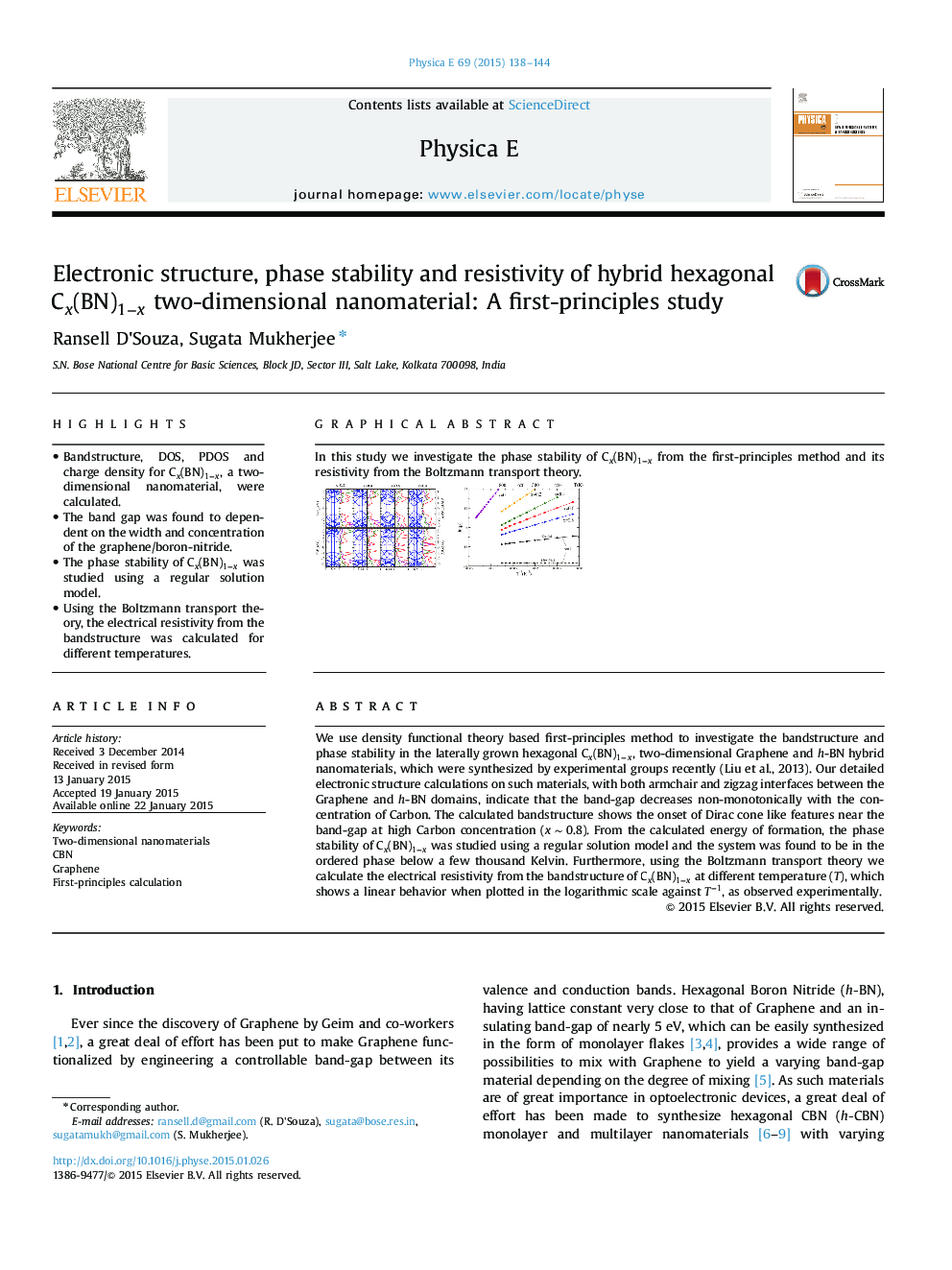| کد مقاله | کد نشریه | سال انتشار | مقاله انگلیسی | نسخه تمام متن |
|---|---|---|---|---|
| 1544189 | 1512880 | 2015 | 7 صفحه PDF | دانلود رایگان |

• Bandstructure, DOS, PDOS and charge density for Cx(BN)1−xCx(BN)1−x, a two-dimensional nanomaterial, were calculated.
• The band gap was found to dependent on the width and concentration of the graphene/boron-nitride.
• The phase stability of Cx(BN)1−xCx(BN)1−x was studied using a regular solution model.
• Using the Boltzmann transport theory, the electrical resistivity from the bandstructure was calculated for different temperatures.
We use density functional theory based first-principles method to investigate the bandstructure and phase stability in the laterally grown hexagonal Cx(BN)1−xCx(BN)1−x, two-dimensional Graphene and h-BN hybrid nanomaterials, which were synthesized by experimental groups recently (Liu et al., 2013). Our detailed electronic structure calculations on such materials, with both armchair and zigzag interfaces between the Graphene and h -BN domains, indicate that the band-gap decreases non-monotonically with the concentration of Carbon. The calculated bandstructure shows the onset of Dirac cone like features near the band-gap at high Carbon concentration (x∼0.8x∼0.8). From the calculated energy of formation, the phase stability of Cx(BN)1−xCx(BN)1−x was studied using a regular solution model and the system was found to be in the ordered phase below a few thousand Kelvin. Furthermore, using the Boltzmann transport theory we calculate the electrical resistivity from the bandstructure of Cx(BN)1−xCx(BN)1−x at different temperature (T ), which shows a linear behavior when plotted in the logarithmic scale against T−1T−1, as observed experimentally.
In this study we investigate the phase stability of Cx(BN)1−xCx(BN)1−x from the first-principles method and its resistivity from the Boltzmann transport theory. Figure optionsDownload as PowerPoint slide
Journal: Physica E: Low-dimensional Systems and Nanostructures - Volume 69, May 2015, Pages 138–144